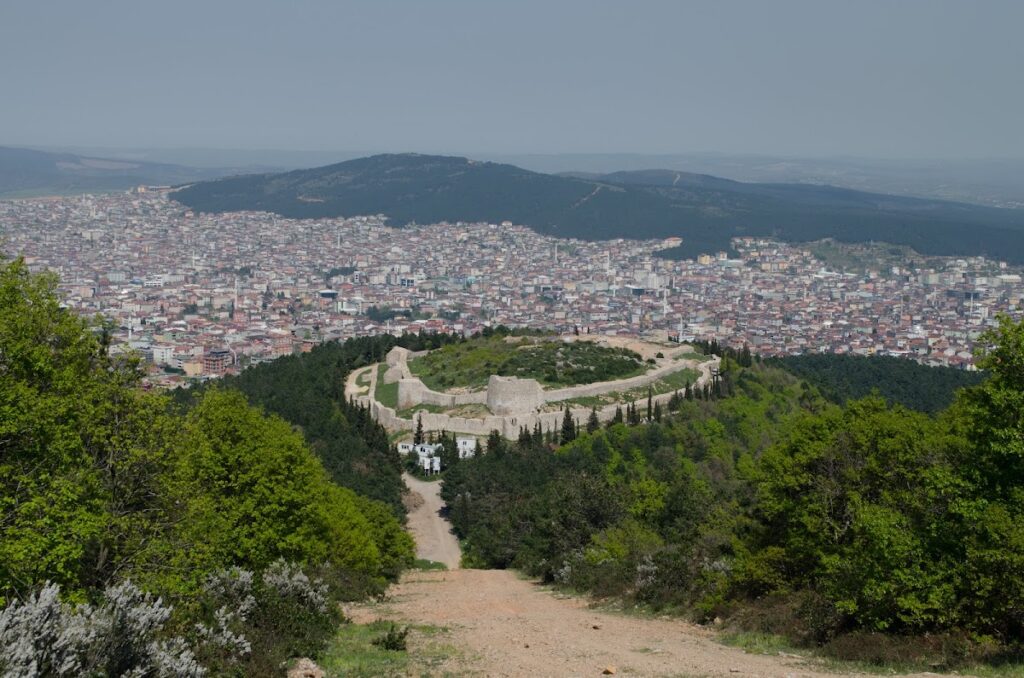Aydos Castle: A Byzantine and Ottoman Fortress in Istanbul
Visitor Information
Google Rating: 4.5
Popularity: Medium
Google Maps: View on Google Maps
Official Website: www.aydoskalesi.com.tr
Country: Turkey
Civilization: Unclassified
Remains: Military
History
Aydos Castle is located within the Sultanbeyli district of Istanbul, Turkey, and was originally built by the Byzantine Empire. Constructed likely during the 11th or 12th century, it served as a strategic stronghold safeguarding the approaches toward Constantinople, the Byzantine capital. The castle’s original name, “Aetos,” is derived from the Greek word for “eagle,” reflecting its lofty position and commanding view over the surrounding landscape.
During the 11th century, as Turkish forces advanced closer to Constantinople, Aydos Castle grew in military significance. However, the Crusades partially halted Turkish expansion in the region, temporarily delaying their advance. By the late 13th and early 14th centuries, renewed conflicts unfolded across the area. Between 1326 and 1328, much of the Kocaeli Peninsula fell under Ottoman control, and the contested border between Byzantine and Ottoman territories was established along the line connecting Aetos to Pentikion, known today as Pendik.
According to Ottoman historian Âşıkpaşazâde, following the Ottoman conquest of Semendra Castle, Orhan Gazi, an early Ottoman ruler, ordered his commanders Abdurrahman Gazi, Akça Koca, and Konur Alp to take Aydos Castle. A well-known legend recounts that the daughter of the Byzantine commander assisted Abdurrahman Gazi in secretly entering the fortress, contributing to its surrender. This story was later retold and adapted by various chroniclers and writers, including Neşrî and Hoca Sâdeddin Efendi in Ottoman histories, as well as European authors such as Joseph von Hammer-Purgstall and Alphonse de Lamartine. These accounts sometimes introduced religious or romantic elements to the narrative.
After the conquest, Abdurrahman Gazi used Aydos Castle as a base for military raids toward Scutari (modern Üesküdar). Nevertheless, the fortress’s strategic importance declined following the Ottoman capture of İzmit in 1337. Ottoman historian Hoca Sâdeddin Efendi notes that Orhan Gazi ordered the demolition of Aydos Castle and transferred its garrison and inhabitants to İzmit, marking the beginning of the fortress’s gradual abandonment.
Archaeological investigations into the site began on September 13, 2010, under the direction of Zeynep Kızıltan from the Istanbul Archaeology Museums. Initial excavation work was completed by early 2011, with further research continuing until December 2022, helping preserve the site and improve understanding of its role throughout history.
Remains
Aydos Castle occupies an elevated site on a ridge of Aydos Hill, reaching approximately 325 meters above sea level. Its overall layout is elliptical, stretching about 120 meters in length and up to 50 meters in width, covering nearly 26,000 square meters when including the defensive outer walls. The fortress was primarily constructed from rough rubble stone combined with limestone blocks, materials chosen for durability and local availability.
The castle features two concentric curtain walls providing layered defense. The inner wall includes six towers strategically placed for surveillance and protection, while the outer wall is guarded by seven towers. These towers and walls demonstrate medieval Byzantine military architectural design intended to withstand sieges and facilitate defense.
Among the surviving elements is a large cistern, measuring roughly 12 meters long and 7.5 meters wide. This underground water reservoir ensured a supply within the fortress during times of siege. Today, it contains various fish and has become a notable feature within the ruins.
Although the castle suffered significant destruction due to multiple fires in its history, several structural remains endure. These include six towers still standing to some degree and the entrances to two secret passages located on the western side of the fortress. The foundations remain visible of what was once a watchtower about 100 meters high, signifying its original commanding height for observation.
The ruins have been extensively documented using modern archaeological techniques such as remote sensing and laser scanning. These methods have helped map the site precisely and provided detailed records for preservation and future study, offering insights into the castle’s original structure and later modifications. This detailed documentation links the physical remains to the historical accounts surrounding Aydos Castle’s military and administrative roles over several centuries.







